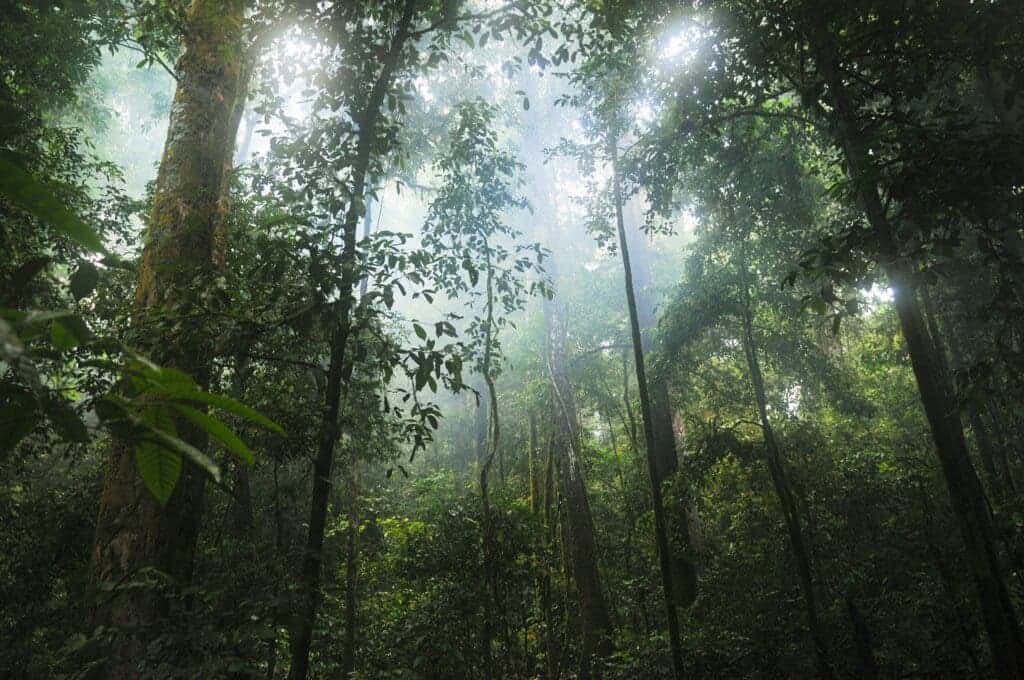
Sure, you’ve heard about the oak and sycamore trees, but do you know about New Zealand’s kauri tree, Madagascar’s traveler’s tree, or Canada’s rhododendron shrub? You may be surprised to learn that there are about 73,000 different species of trees growing on Earth, according to estimates from the most thorough analysis of its kind to date involving more than 140 scientists across the globe and the largest forest databases assembled thus far. Of these, it is thought that nearly 9,200 species have yet to be discovered, making the global estimate about 14% higher than the current number of known tree species.
Many of these tree species are likely rare and extremely localized to specific ecosystems, making them vulnerable to extinction. Some may disappear for good before scientists get the chance to identify and describe them. This is precisely why this latest study is so important — it provides the tools to identify rare and threatened species that require immediate action to prevent them from becoming extinct, as well as map out the most likely locations where new species may be found.
“It is well known that tree species are going extinct due to deforestation and climate change, and understanding the value of that diversity requires us to know what is there in the first place before we lose it. Thus if we were successful in estimating the number of species, it would establish a quantitative benchmark to help us to prioritize conservation efforts,” University of Michigan forest ecologist Peter Reich told ZME Science.
For their study, Reich and over a hundred other international colleagues combined two massive global datasets — one from the Global Forest Biodiversity Initiative and the other from TREECHANGE — to establish tree abundance and occurrence across 90 countries. This data took many years to gather, often requiring researchers to get their boots wet in the field where they would collect samples, measure trees, and count each individual tree in the forest.
This is not the first attempt to quantify the species of trees in the world. Previously, Botanical Gardens Conservation International (BGCI) compiled a list of 60,065 species using data gathered from its network of over 500 member organizations. The new study, however, went the extra mile. It used a vastly more extensive dataset, which makes the estimates more reliable, and the study also estimated unknown species using novel statistical methods.
“Given our enormous data set (more than 40 million trees, 64,000 species in our sample, 9,300 grid cells across the globe) we have sufficient data to address a lot of questions impossible to answer previously,” Professor Reich said.
“Really smart statistically savvy ecologists figured out that there is a lot of information hidden in the numbers of species that show up only once or twice or three times in a large sample, such as the one we put together. If among a million individual trees we found 800 species, but all of them at least 17 times (I just made up those numbers as an illustration), it is unlikely that there are many additional species out there (because the rarest in our sample have already been encountered quite a few times). By contrast, the greater the number of species that are found only once (and we found a lot of those), the greater the number of species that are similarly rare but that we by accident likely did not yet encounter. And the greater the ratio of species we found once versus twice, and that we found twice versus three times, the more likely is it that there are lots of species we simply did not yet encounter,” the scientist explained.
The analysis of the combined databases yielded a total of 64,100 tree species worldwide. With another estimated 9,200 species yet to be discovered, the total number of tree species on Earth is believed to hover around 73,000.
Nearly 40% of these undiscovered species are likely waiting to be discovered in South America, particularly in biodiversity hot spots like the Amazon basin and the Andean forests. This makes sense since the continent is home to the highest number of rare tree species (nearly 8,200). What’s more, nearly half of all tree species in South America are endemic to the continent, meaning they can’t be found anywhere else in the world.
Up to two-thirds of all already known tree species are found in tropical and subtropical moist forests, which are inaccessible and difficult to study. Dry forests in the same regions also likely hold high numbers of undiscovered species.
But these same hotspots are also the most threatened at the moment by deforestation, climate change, and devastating fires. The new findings show tree diversity is even richer than previously thought, which makes the case for preserving and cherishing these natural treasures all the more important.
“Understanding the value of that diversity requires us to know what is there in the first place before we lose it. By establishing a quantitative benchmark, our study can contribute to tree and forest conservation efforts. Plus, we discovered that one-third of known species are rare, and a much larger fraction of unknown species are rare as well. Rare species are far more likely to go extinct from deforestation and climate change, so our results highlight the vulnerability of global forest biodiversity. It is also difficult to manage or conserve resources without a good understanding of what exists, so our data will help us assess where biodiversity is the most threatened (see above), based on the global hotspots of known and unknown rare species, and thus help us to prioritize conservation efforts,” said Reich.
The findings appeared in the Proceedings of the National Academy of Sciences.









